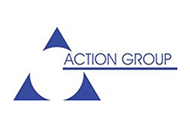Floyd:
Thank you so much for joining us. I'm Floyd, the Director of Marketing here at Sparkrock. We have two fabulous presenters today: Gary Servius, a Senior Sales Executive at Sparkrock, and Jennifer Hume, a Pre-Sales Consultant at Sparkrock.
You'll be hearing from both of them in just a few moments. Our agenda for today starts with an overview of Sparkrock. We'll then talk about some of the manual processes related to employee expense claims and credit card reconciliation that you may be facing in your day-to-day work. After that, we'll show a demo of how the software can help with those specific functions.
Finally, we'll have a Q&A session. Please feel free to leave your questions in the chat as we go. And with that, I’ll pass it over to Gary Servius.
Gary:
Thank you, Floyd. Hello everyone — really excited to be here.
Before we get started, I want to say a few words about myself. I’m a Senior Account Executive at Sparkrock. As Floyd mentioned, I’ve been working in the ERP space for over a decade now. Early in my career, I worked with both for-profit and nonprofit organizations to find the right solutions. In recent years, I’ve chosen to focus exclusively on the nonprofit sector, which led me to join Sparkrock.
Let me share my screen here... all right, looks like I’ve taken over the slides — perfect.
When we talk with executives — CFOs, Directors of Finance, and others — who reach out looking for a new ERP solution, they often bring up the challenges and pain points they face. Things that keep them up at night. These conversations are what led us to today’s topic: credit card reconciliation and expense claims.
But before we dive into the topic, I’d like to give you a bit of background on Sparkrock — especially for those who may not be familiar with us. This will give you more context on what we do, how we do it, and why we’re well-positioned to help with the challenges we’ll be discussing today.
A little over 20 years ago, we identified a gap in the market when it came to nonprofit organizations. Back then, it was an underserved market with very unsophisticated solutions. Sparkrock was founded in 2003 out of a desire to provide nonprofits with better tools.
To achieve this, we looked for the best possible partner — and that’s why, from the beginning, we chose to partner with Microsoft. While most people don’t think of Microsoft when it comes to ERP systems, the company has actually been a major player in this space for over 30 years. Here is the revised and cleaned-up version of the next section of your transcript. I've corrected grammar, clarified phrasing, and standardized formatting while preserving the original meaning and flow:
Gary:
Over the past few decades, Microsoft’s solutions have evolved significantly through technology and innovation. And as Microsoft grew, so did we.
Today, our platform is built on Microsoft’s cloud solution called Microsoft Dynamics 365 Business Central. Some of you may already be familiar with it. As you can see in the image on screen, our solution sits within and operates directly inside the Microsoft Dynamics 365 environment.
So, you might be wondering: What are you adding to the Microsoft ecosystem? What makes your solution unique?
Well, based on our experience working with nonprofit organizations, we’ve found that Business Central—like many ERP systems originally built for for-profit businesses—is missing some of the critical features that nonprofits truly need.
Business Central is an excellent solution for traditional businesses. Those businesses are usually focused on revenue: tracking sales, margins, inventory, and so on.
But nonprofits operate differently. You typically have fewer revenue sources, and those sources—like grants and donations—come in large chunks. As a result, nonprofits tend to focus much more on how money is spent. Every dollar must be carefully tracked and accounted for—especially since you have to report back to your funders.
That means you need robust capabilities around:
- Requisition and invoice approvals
- Commitments and encumbrances
- Project and grant accounting
- Regulatory and funder-specific reporting
These features often don’t exist in standard, for-profit ERP solutions. That’s why many nonprofits that adopt general-purpose ERP tools end up frustrated. They waste time and resources trying to patch things together, relying on spreadsheets and manual processes to bridge the gaps.
What we’ve done at Sparkrock is take the same level of sophistication that Business Central offers for revenue management—and bring it to the expense management side, which is where nonprofits truly live.
Before Sparkrock was founded 20+ years ago, nonprofits had essentially two choices:
- Use a well-established, general-purpose ERP system designed for businesses—which, as we’ve just discussed, doesn’t fit your unique needs
- Choose a niche solution built specifically for nonprofits—but these often lacked the power, support, and integration you’d expect from a modern ERP system
Here is the next cleaned-up and properly formatted section of your transcript, with grammar fixed and flow improved while keeping the tone and message intact:
Gary:
Now, while those niche solutions might seem like a better fit—because they include some of the features nonprofits need—unfortunately, they’re often not as robust or well-developed as the ERP systems available to businesses.
Why? Because in many cases, these niche products come from small startups. And worse, they often lack the stability, security, and long-term support that larger organizations like yours require.
With Sparkrock, we offer the best of both worlds. On one side, you get the security, scalability, and reliability of Microsoft’s infrastructure. On the other, you get Sparkrock’s deep sector-specific expertise—built around the unique needs of nonprofit organizations.
We bring to the table the ability to leverage Microsoft’s investment in Business Central—an investment that totals in the millions of dollars. And because it’s built on Microsoft’s cloud infrastructure, you get:
- Anytime, anywhere access on any device
- Enterprise-grade privacy and security
- Built-in functionality and connectivity across the Microsoft ecosystem
That includes Office 365, Microsoft Teams, Power Apps—and now AI features with Microsoft Copilot.
When you combine Microsoft’s power with Sparkrock’s nonprofit-specific capabilities, you can see why we’re uniquely positioned to meet the needs of nonprofit organizations better than anyone else.
So now that you understand who we are and what we do, let’s narrow in on today’s topic.
When we speak with organizations like yours, we consistently hear about the pain points and challenges you’re trying to solve. And while every organization is different, whether you’re coming from an outdated legacy system or a modern solution that wasn’t built for nonprofits, one common theme always comes up:
Manual processes.
And I’m sure you can all picture the issues that come with that:
- Repetitive work
- Duplicate data entry
- High risk of errors
- Lack of transparency
- Lost time and wasted resources
Now, where do we usually see the most manual work? You’ll see the top areas on your screen:
- Reporting
- Budgeting
- Employee reimbursable expenses
- Purchase-to-pay workflows
- Credit card reconciliation
Let’s start with reporting.
This is where finance teams often spend way too much time piecing together data from multiple sources—accounting systems, spreadsheets, bank statements, payroll systems—that don’t talk to each other. They’re trying to reconcile everything, make sure the numbers align, and then build the right reports.
And these reports aren’t just for one audience. You’re reporting to your board, your executive director, program managers, and your funders. Doing all of this manually is incredibly time-consuming and leaves a lot of room for errors.
Here’s your cleaned-up and formatted version of this extended section. I've preserved the speaker's voice and conversational tone, but corrected grammar, sentence flow, and structure for clarity and readability:
Gary:
Another area that’s intense, time-consuming, and prone to errors is budgeting.
Budgeting is typically a collaborative process. Gathering and manually compiling data from different departments—program managers, HR, and others—often involves multiple emails, phone calls, and spreadsheets. This not only increases the chance of mistakes but also makes it hard to track revisions or feedback from different stakeholders.
When there’s a lack of visibility, program managers are more likely to overspend—and none of us want that.
Next on the list is employee reimbursable expenses. We often see organizations where employees submit expense reports via email or paper—usually without consistent formatting. That means the finance team has to manually review receipts, categorize expenses, and check for alignment with policy.
This process is especially time-consuming if you have a high volume of submissions, and it increases the risk of misclassified expenses and general errors. We’ll come back to this point in a moment.
Fourth, we have the purchase-to-pay workflow. Finance teams need to track and process purchases, approvals, invoices, and payments—all while ensuring compliance with donor restrictions, grant requirements, and budget limits. Without automation, purchase requests are often submitted via email or paper, leading to:
- Approval delays
- Miscommunication
- Lack of a clear audit trail
This increases the risk of errors, duplicate payments, and missed invoices.
And finally, there's credit card reconciliation. Matching credit card transactions with receipts and properly coding each charge is incredibly time-consuming when done manually—especially if you have a high volume of transactions and multiple corporate credit cards to reconcile.
All five of these areas have something in common:
- They are labor-intensive
- They are time-consuming
- They are prone to errors
- They slow down decision-making due to a lack of visibility and real-time data
In our last webinar, about two months ago, we ran a poll. We asked participants:
“What is your most challenging manual process?
If you had a magic wand and could eliminate just one manual process, which would it be?”
The options were:
- Credit card reconciliation
- Purchase-to-pay workflow
- Budgeting
- Employee reimbursable expenses
- Financial reporting
The results? Credit card reconciliation was the clear leader, with 37% of the vote—followed by employee reimbursable expenses at 18%. So these two areas are clearly top-of-mind for most nonprofit organizations.
Let’s take a closer look at why.
Manual Credit Card Reconciliation
When we talk with nonprofit finance teams, here’s the scenario we hear again and again:
Every month, your corporate card users receive their credit card statements. They print or photocopy those statements, then go find the folder where they’ve stored their receipts—hopefully they’ve saved them all.
Next, they open a credit card reconciliation report—sometimes in Excel, sometimes handwritten—and try to match every transaction to a receipt. They staple everything together and (if you're lucky) categorize and code all the transactions correctly.
But in most cases, they either don’t know how to code the expenses properly, or they leave things blank. Then everything gets stuffed in an envelope and mailed to your office.
You now have boxes and boxes of reconciliation reports and receipts that your Accounts Payable clerk has to review—verifying everything is properly categorized and coded.
Just describing it is stressful.
And as you can imagine, the more transactions and credit cards you have, the more painful and frustrating the process becomes.
It gets even worse when organizations share corporate credit cards among multiple staff members.
Employee Reimbursable Expenses
The process for employee expense claims is often just as bad.
Instead of a credit card statement, employees submit expense claim forms—many of which are handwritten. In some organizations, there isn’t even a standardized form. Employees just send “whatever” they feel like to get reimbursed.
They try to keep all their receipts—again, if you're lucky—and staple them together. Then they walk over to their manager’s office, drop the report on their desk, and hope it doesn’t get buried.
Eventually, the manager approves it, stuffs it in an envelope, and mails it over to you—adding yet another stack to that giant pile of receipts and reports your finance team needs to sort, code, and process.
And we haven’t even talked about chasing people for missing reports or receipts, or trying to enforce your policies consistently.
Some of you may be thinking,
"Well, Gary, we don’t mail things anymore. We email everything now."
Sure—but while email may save a bit of time, the process is still completely manual. You still have:
- The same risk of errors
- The same delays
- The same lack of control and visibility
- The same weak audit trail
- And the same inability to scale efficiently
At the end of the day, all of this adds unnecessary pressure to your finance team. You have talented staff spending hours and hours on tasks that today can be done in just a few clicks.
This prevents your team from using their time more effectively—and stops them from adding greater value to the organization.
So if you truly care about your finance team, and want to spare them this frustration, you need to act. You need to re-examine the processes you have in place and ask:
Do these processes truly serve the needs of the organization?
When we start identifying and isolating the processes that drag you down, credit card reconciliation and employee expense claims are almost always near the top of the list.
Now that we've walked through a typical manual process for both reconciliation and expense claims, I'm going to hand it over to Jennifer so we can jump into the demo and show you how Sparkrock can help modernize these processes.
Jennifer Hume:
Thanks, Gary. Just listening to you brought back a lot of memories—maybe not all good ones! But definitely memories of dealing with those same inefficiencies around employee expense reports and credit card reconciliation.
As Floyd mentioned earlier, my name is Jennifer Hume, and I’m a Pre-Sales Consultant here at Sparkrock. I’ve been with Sparkrock for about four years now. Before that, I was a customer for 12 years—three years with a school district and nine years with a nonprofit. So, I’ve experienced these challenges firsthand, and I’m really excited to show you how Sparkrock can help.
First, I’ll go over how employees can enter expense claims—starting with corporate credit card (PCard) expenses, then mileage, and general reimbursable expenses. I’ll also show you how Sparkrock handles pre-approvals.
(Demo walkthrough continues with Jennifer guiding through the MySparkrock employee self-service portal, showing how to:)
- Add and code expenses
- Upload receipts via drag-and-drop
- Split expenses across departments
- Attach policy links
- Use account sets for advanced coding
- Reconcile credit card transactions
- Submit mileage with and without pre-defined routes
- Trigger budget checks prior to approval
- Submit expense claims and track their status
Jennifer Hume:
Once the employee completes their entries, they can create and submit a claim. Sparkrock automatically separates reimbursable amounts from corporate credit card transactions, so the employee is only reimbursed for out-of-pocket expenses.
And if an expense isn't properly coded? The system won’t let it be submitted—this helps maintain compliance and data integrity.
One standout feature here is budget checking. Whether enabled for employees or just managers, the system shows:
- Budgeted amount
- Committed funds
- Actual expenditures
- Remaining balances
This gives real-time visibility and improves cost control.
(Jennifer then transitions to the AP Coordinator experience in Sparkrock 365, demonstrating how to:)
- Set up vendors and PCard clearing accounts
- Import credit card statements
- Process journals and post AP invoices
- Review employee claims and match expenses to clearing accounts
- Flag duplicate expenses using built-in checks
- Enforce receipt thresholds and audit trails
Jennifer Hume:
Instead of manually printing, highlighting, photocopying, and mailing credit card statements for review, this whole process is now just a few clicks. You import, post, and the entries are pushed to employees automatically.
Accounts Payable can view the approved claims, create purchase documents, and clear the credit card clearing account—all within the system.
And Sparkrock even checks for duplicate entries, like two Amazon purchases on the same day for the same amount. That gives you the visibility to follow up and correct issues proactively.
So, to review:
- You upload corporate credit card statements into Sparkrock 365
- The system pushes transactions to employees for coding and receipt uploads
- Expense types help guide GL account selection
- Receipts are mandatory where required
- Budgets are checked before approval
- AP reconciles and posts the expense claims efficiently
That’s it for the demo. I’ll now hand it back to Floyd to handle the Q&A.
Floyd:
Wonderful—thanks so much, Jennifer!
If you’ve already submitted questions, thank you. I’ll start going through them now. If you haven’t yet, feel free to leave your questions in the Q&A. We are receiving them even if you can’t see the chat.
(The Q&A session includes questions and responses from Jennifer and Gary, such as:)
- Q: Are credit card transactions manually entered?
A: No—they’re imported automatically through a bank integration. Employees can reconcile them via the portal.
- Q: How user-friendly is the mobile experience?
A: Very. It works great on phones—employees can snap a photo of a receipt and upload it instantly.
- Q: What happens if an expense exceeds the allowed amount?
A: The system prevents submission—it throws an error and blocks the claim.
- Q: Is bulk expense preapproval possible for multiple staff?
A: Yes—either through the system or using Microsoft Forms embedded in MySparkrock.
- Q: Can Sparkrock replace solutions like Concur?
(Gary rejoins after tech issues.)
Gary: Absolutely. Sparkrock delivers all the functionality of those systems—plus integrated ERP, budget checking, and no third-party tools or connectors.
- Q: Does Sparkrock support fund accounting for ministries with donor-based funds?
A: Yes—we support fund accounting, including restricted/unrestricted funds, interfund transfers, and four-legged journal entries.
- Q: Are there pricing tiers for users?
A: Finance team and ERP users are covered under your license. Only expense-only users (for corporate cards or expense claims) are licensed separately, and those are very inexpensive.
- Q: Can employees self-approve their expenses?
A: Yes—self-approval is supported, but typically limited to certain user groups for policy control. - Q: Can Sparkrock help recover tax rebates like GST?
A: Yes—tax configurations can be tailored to your province, state, or region. We support GST recoveries, PST treatment, and U.S. sales tax.
.png?width=150&height=150&name=Jennifer%20Hume%20(4).png)
%20(3).png?width=150&height=150&name=Gary%20(2)%20(3).png)




.png)




